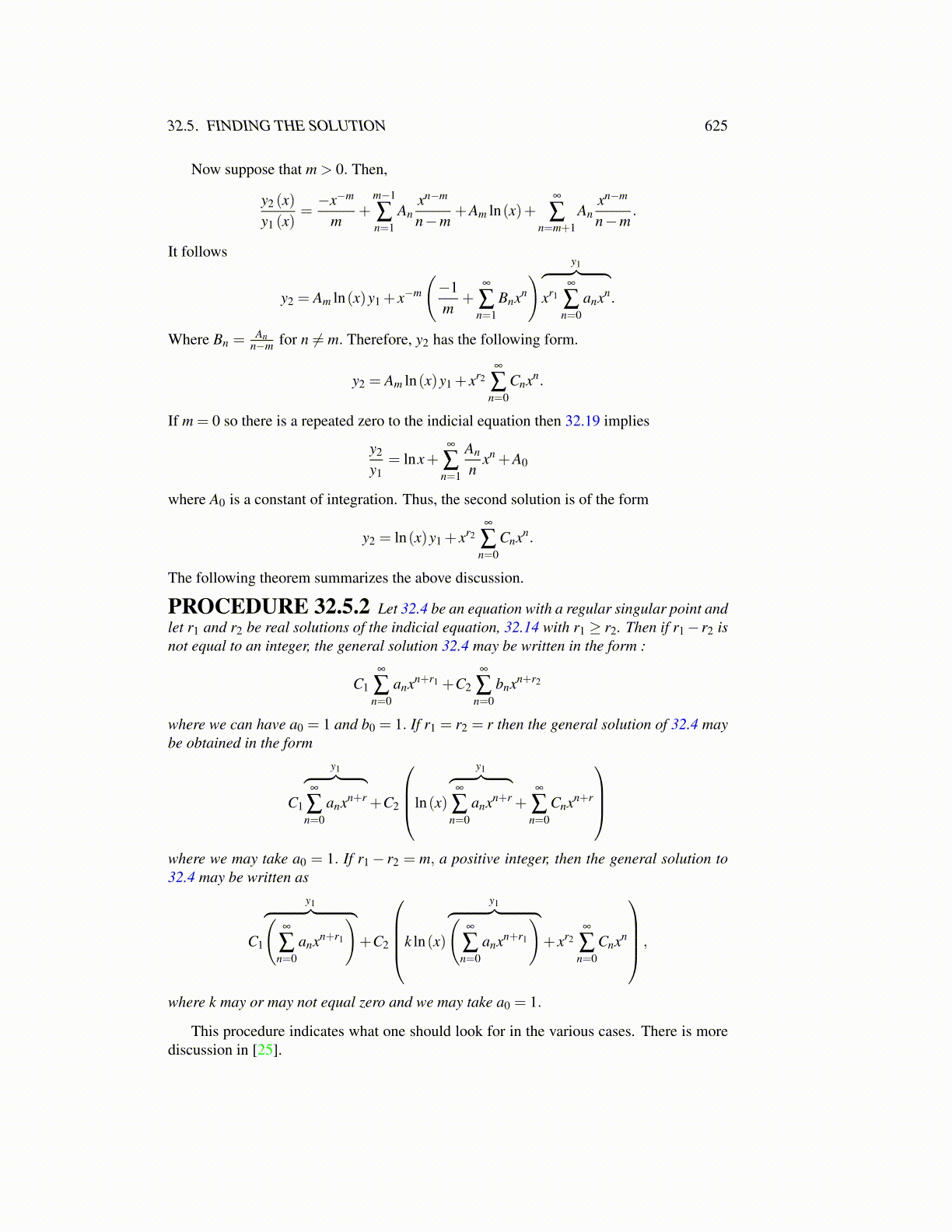
32.5. FINDING THE SOLUTION 625
Now suppose that m > 0. Then,
y2 (x)y1 (x)
=−x−m
m+
m−1
∑n=1
Anxn−m
n−m+Am ln(x)+
∞
∑n=m+1
Anxn−m
n−m.
It follows
y2 = Am ln(x)y1 + x−m
(−1m
+∞
∑n=1
Bnxn
) y1︷ ︸︸ ︷xr1
∞
∑n=0
anxn.
Where Bn =An
n−m for n ̸= m. Therefore, y2 has the following form.
y2 = Am ln(x)y1 + xr2∞
∑n=0
Cnxn.
If m = 0 so there is a repeated zero to the indicial equation then 32.19 implies
y2
y1= lnx+
∞
∑n=1
An
nxn +A0
where A0 is a constant of integration. Thus, the second solution is of the form
y2 = ln(x)y1 + xr2∞
∑n=0
Cnxn.
The following theorem summarizes the above discussion.
PROCEDURE 32.5.2 Let 32.4 be an equation with a regular singular point andlet r1 and r2 be real solutions of the indicial equation, 32.14 with r1 ≥ r2. Then if r1− r2 isnot equal to an integer, the general solution 32.4 may be written in the form :
C1
∞
∑n=0
anxn+r1 +C2
∞
∑n=0
bnxn+r2
where we can have a0 = 1 and b0 = 1. If r1 = r2 = r then the general solution of 32.4 maybe obtained in the form
C1
y1︷ ︸︸ ︷∞
∑n=0
anxn+r +C2
ln(x)
y1︷ ︸︸ ︷∞
∑n=0
anxn+r +∞
∑n=0
Cnxn+r
where we may take a0 = 1. If r1− r2 = m, a positive integer, then the general solution to32.4 may be written as
C1
y1︷ ︸︸ ︷(∞
∑n=0
anxn+r1
)+C2
k ln(x)
y1︷ ︸︸ ︷(∞
∑n=0
anxn+r1
)+ xr2
∞
∑n=0
Cnxn
,
where k may or may not equal zero and we may take a0 = 1.
This procedure indicates what one should look for in the various cases. There is morediscussion in [25].